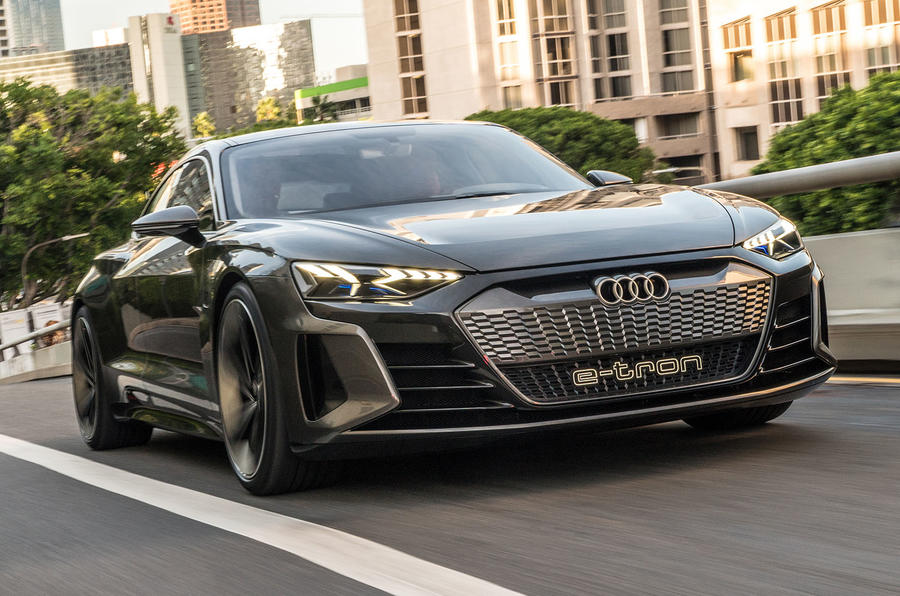Driving a one-off concept car is, unfortunately, often less glamorous and exciting than you’d think.
Time behind the wheel can be very restricted, sometimes to a couple of hundred yards in a straight line or two laps of a car park at 10mph. You’re surrounded by minders who are understandably nervous at the thought of a careless buffoon climbing behind the wheel and wrecking a near-priceless piece of their brand’s design history, and any hint of rain always stops play.
There are rare exceptions, though, and our time driving Audi’s new E-tron GT was one of them.
After last month’s Los Angeles motor show, where the E-tron GT made its debut, Audi pulled the concept, claimed to be worth €5 million (£4.5m), out onto the streets and gave a select group of journalists the chance to take it for a spin. On the public road. In downtown LA. During rush hour. Escorted through red lights by police officers on motorcycles. This sort of thing doesn’t happen often.
It’s perhaps unsurprising that Audi was so keen to let us try the E-tron GT in a real-world environment. After all, it may officially be a concept, but those involved tell us it’s 95% finished visually, and a significant amount of the development work for the car’s oily (well, sparky) bits has been completed. The electric four-door coupé is due to arrive in production form in around 18 months, with only a handful of small-scale changes from the prototype.
The E-tron GT will be the third EV from Audi to roll out after the recently launched Audi E-tron and upcoming E-tron Sportback SUVs. That’s three out of a planned 12 bespoke electric Audis due to be launched before 2025, as part of a €14bn (£12.6bn) investment plan for one brand alone. The sum itself is a fraction of the simply vast cash reserves being ploughed into transforming a number of the Volkswagen Group’s marques into mass-volume electric car makers.

Part of the reason for this is that the VW Group needs to be seen to be reacting in a wide-reaching way to the infamous Dieselgate scandal. Audi bosses will trot out the official line that diesel remains an important part of its range – and, for the time being, it still is. But, behind the scenes, they know that the sooner they can distance themselves from the fuel, the better.




































Join the debate
Add your comment
That looks
Appalling range!
I'm sorry but in what world is 250 miles on the WLTP range test Tesla baiting? That probably equates to about 200 miles on the EPA test, or 135 miles less than the 100D!! That's falling short by over 40%!! It's a great looking car, and I'm sure it'll be solidly engineered but those range numbers are embarassing.
Stylish
But the rear window should be a full hatch and ditch the contrived blacked out section across the bottom third of the glass.